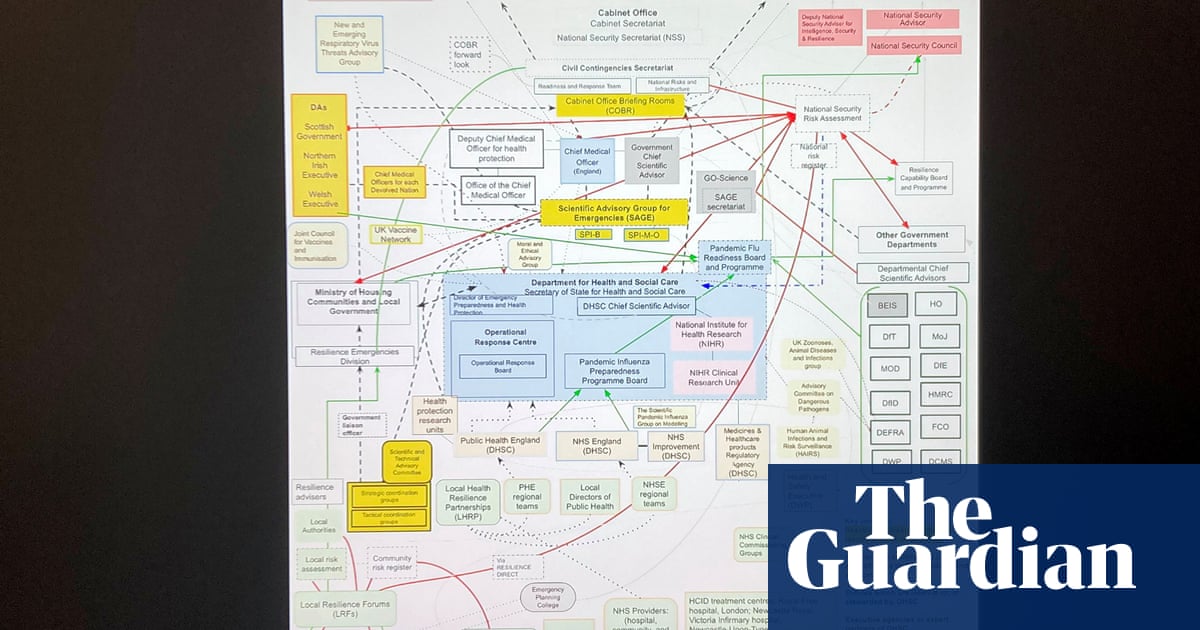
The rising death toll from drug-resistant bugs is “very scary” and people do not even realise it is happening, the UK’s special envoy for antimicrobial resistance (AMR) has said.
Superbugs kill more than a million people each year but neither governments nor the public recognise the scale of the threat, doctors complain. The crisis is largely driven by the misuse of antibiotics – about 70% of which are given to livestock – which encourages the evolution of microbes too strong for modern medicine to handle.
“We need to use antibiotics safely and appropriately,” said Sally Davies, who stepped down as England’s chief medical officer in 2019 to champion the UK’s fight against superbugs.
By 2050 it is projected that drug-resistant bugs will kill nearly 2 million people each year and play a role in the deaths of 8 million people. The figures put AMR in a similar ballpark to the Covid-19 pandemic, which the World Health Organization (WHO) estimates led to 4m excess deaths in 2020 and 10m in 2021.
Data published on Thursday showed a rise in serious antibiotic-resistant infections in 2023 to 66,730 cases, above pre-pandemic levels. E coli caused 65% of cases in the UK over the past five years.
“Some people talk about [AMR] being a pandemic – it is,” Davies said. “Is it a slow-developing one, an insidious one, or what? I don’t mind the words you want to use, but it’s pretty awful.”
World leaders have taken little action to cut AMR-related deaths but they promised to reduce them by 10% by 2030 at the UN general assembly in September. Public health experts are frustrated by the lack of interest from governments and the lack of awareness among the public.
“It’s clearly a lack of prioritisation – and that must be a failure of our communication,” Davies said. “That’s in part the name, ‘antimicrobial resistance’, AMR, in part the complexity, and the big bit that’s hidden … they [doctors] don’t tell people what they’re dying of.”
Davies, who has previously served on the executive board of the WHO, lost her goddaughter to antimicrobial resistance two years ago. “It was horrible. She had cystic fibrosis, she knew she had AMR, and she knew she was going to die of it because it was infecting her lung transplant,” she said.
“She said to me: Sally, you’ve worked on this for years, you must use my case [to raise awareness]. She was very brave.”
Doctors have urged people to play their part in fighting the rise of superbugs by only using antibiotics when prescribed them and then taking the full course.
They also point to the large role that animal agriculture plays behind the scenes. The growing hunger for meat is increasing demand for livestock and use of antibiotics – some of which are used to treat animals that are not sick, sometimes as a substitute for keeping them in clean conditions, Davies said.
“That drives the development of resistance,” she said, “which can then be on the meat when it’s sold, and people pick it up that way. It can be passed to abattoir workers who go home to their families. And it definitely does get to farmworkers and their families.”
Most antibiotics are flushed out of an animal’s body in its excretions, Davies said. “If you’ve got high-intensity farming, you’re going to get antibiotics in the fields and in the runoff … That can get into the water table. But also, it turns out, wind coming along can pick up bacteria and bits of genes, take them up into the sky and clouds, and rain it down somewhere else.”
Antibiotic use in farm animals is correlated with antimicrobial resistance in humans, a study found last year. It found an “extremely high” E coli resistance of 73.3% to aminopenicillins, which are used in animals, but “very low” resistance of 0.78% to glycylcyclines, which are banned in animal farming.
For S aureus, the researchers found a resistance to the macrolides group of antibiotics of 56%, while resistance to vancomycin, a more recent antibiotic banned in animal farming, was just 0.22%.
EU rules to encourage better farming practices have reduced the amounts of antibiotics given to animals, with little impact on the industry. In Denmark, a leading producer of pork, pigs consume one-fifth of the global average. In France, which is famous for its cheese, cows consume about one-quarter of the average.
Alan Dangour, who leads the climate and health team at Wellcome, a nonprofit research organisation, said scientists discovering new treatments were in a race against the bugs.
“It’s clear that if we don’t find another set of antibiotics or responses to bacterial infections, more and more people will be catching infections that are no longer responsive to the medicines we have,” he said. “That’s very dangerous. Imagine going back to a world before the invention of antibiotics, where people were dying left, right and centre from being cut … we don’t want to go back to that world.”












